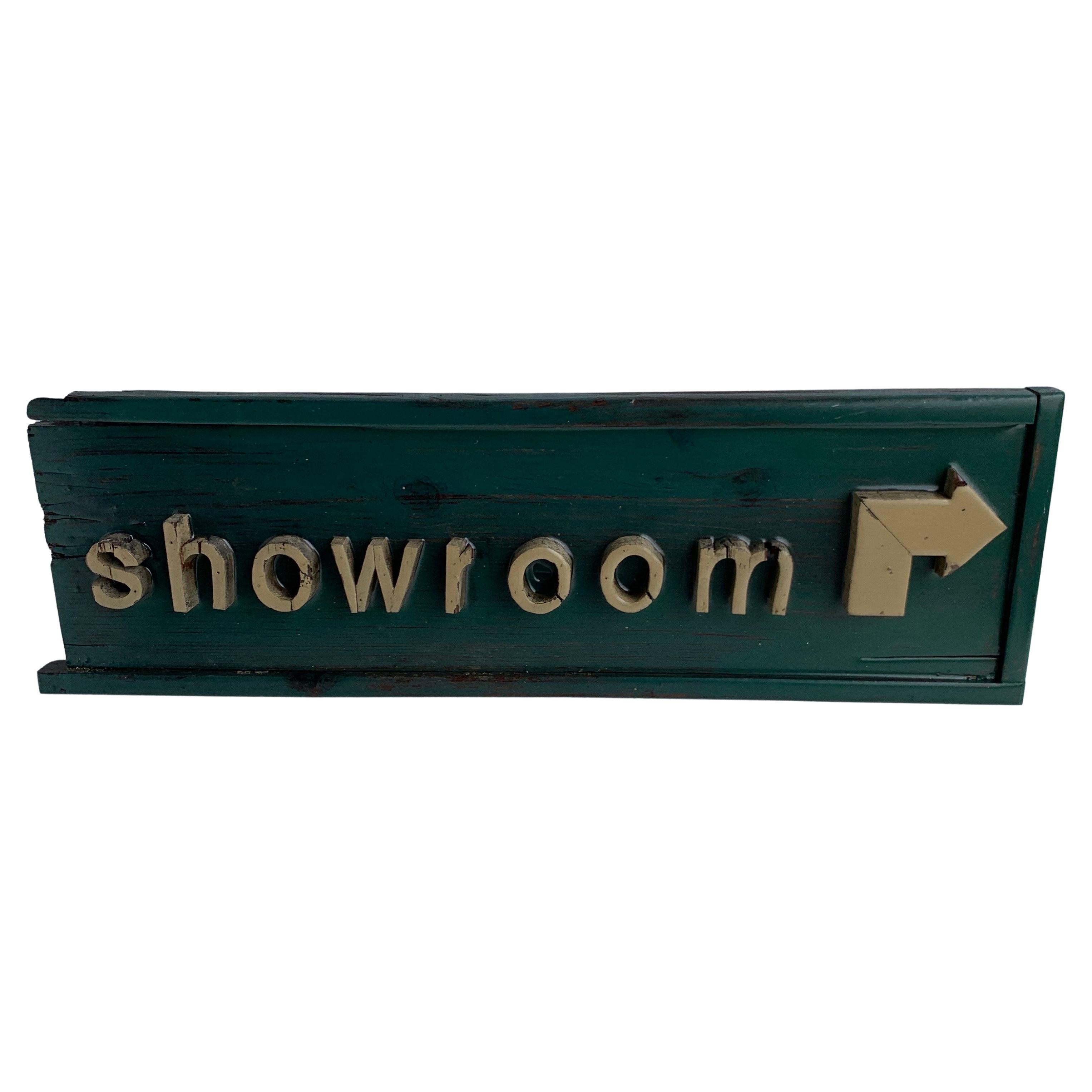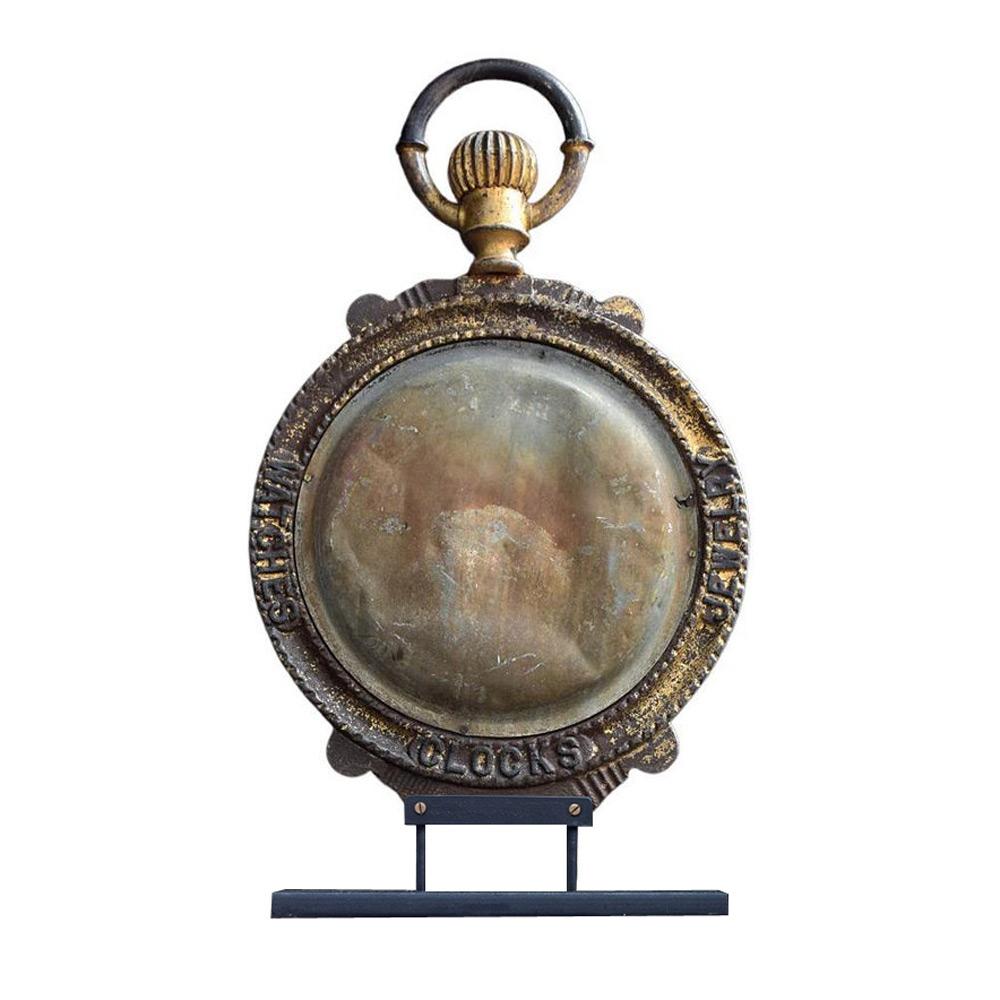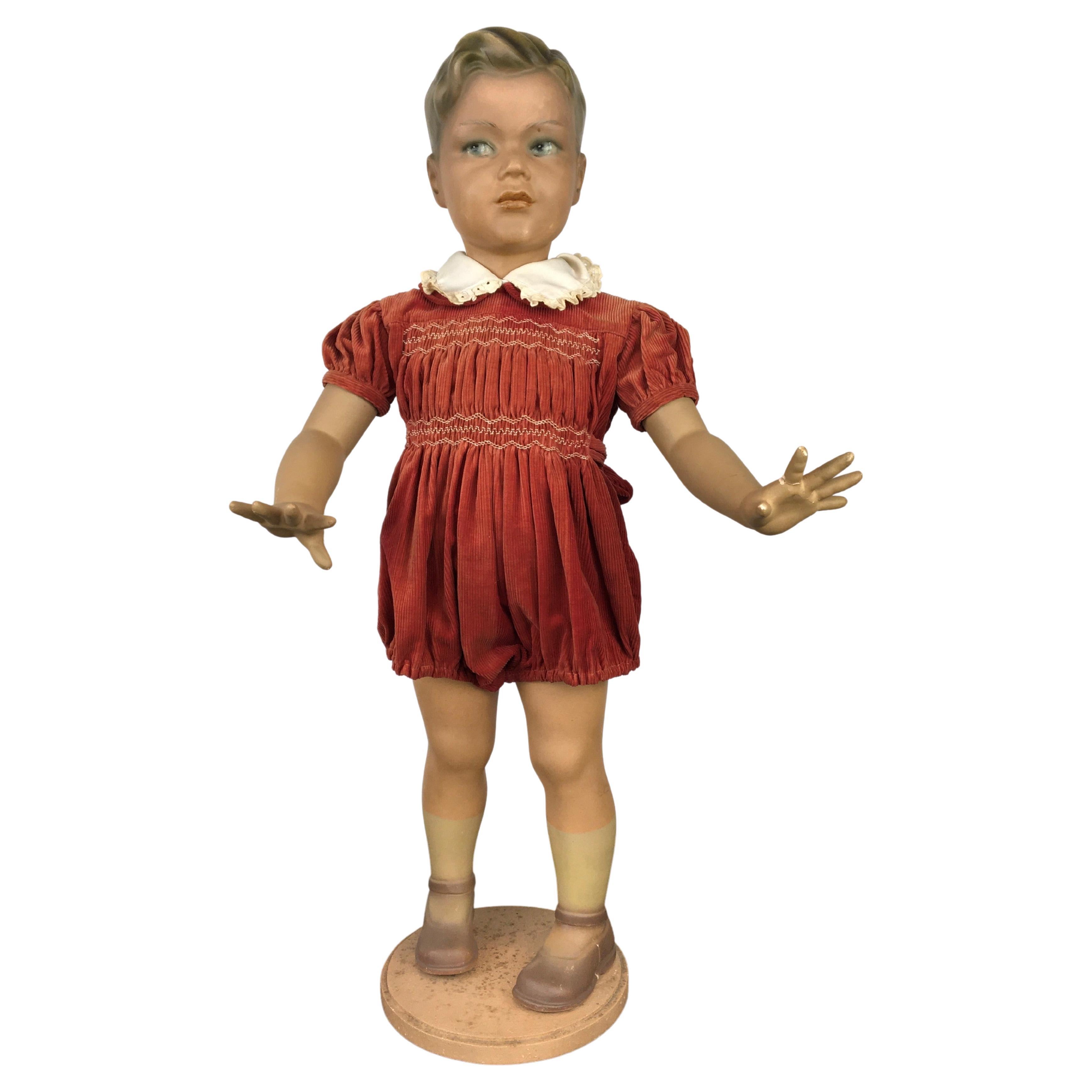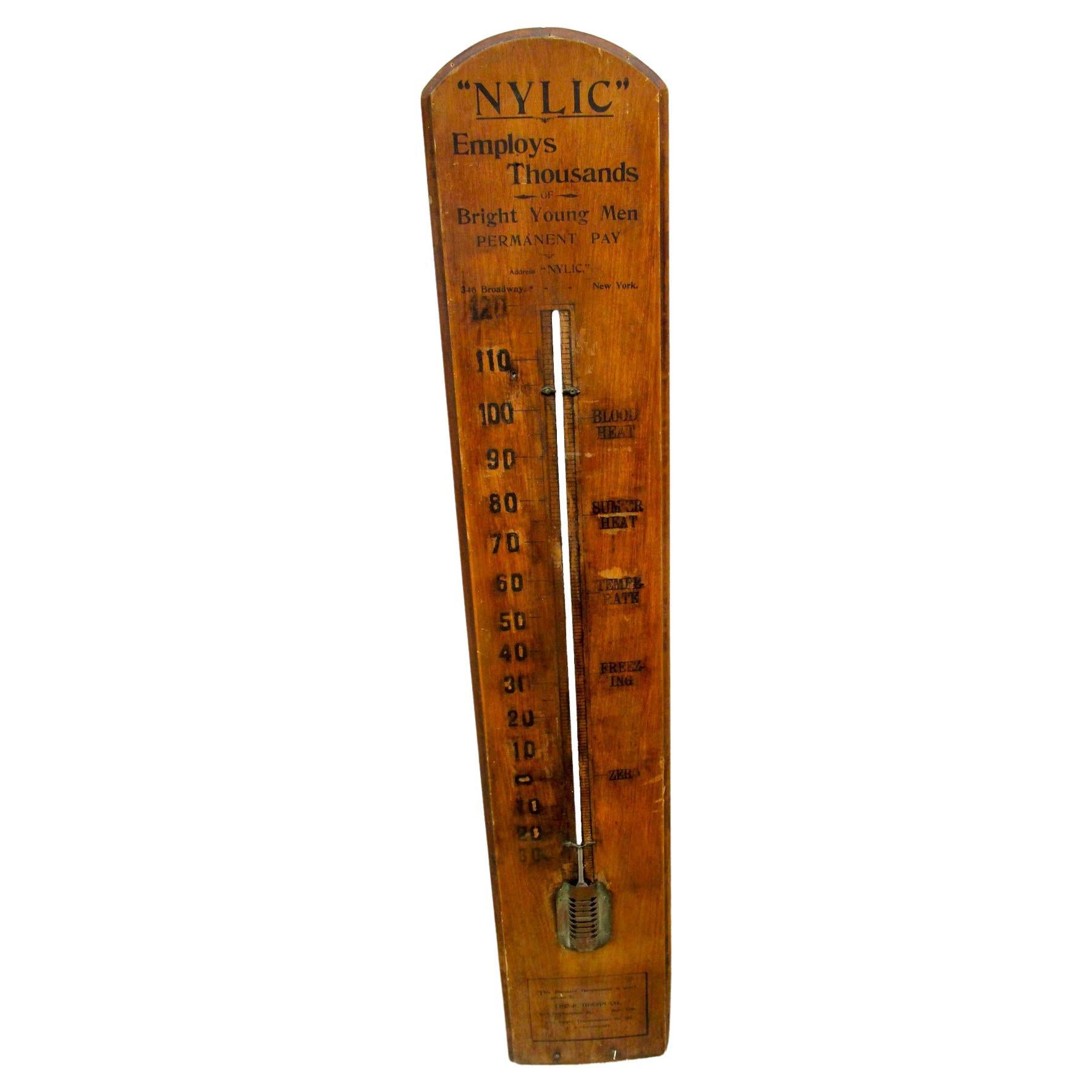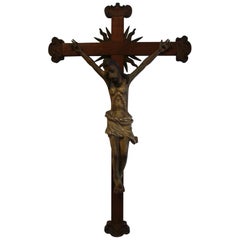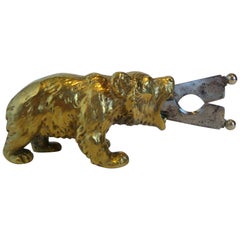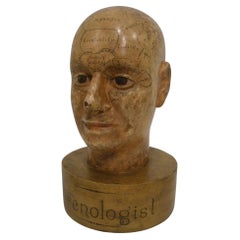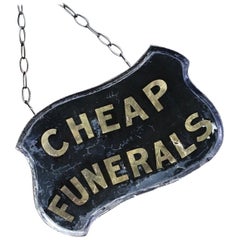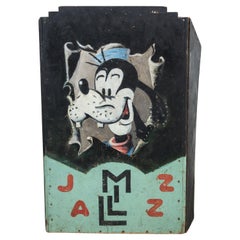Items Similar to Cigars Store / Trade Folk Art Wooden Carved Sign. c 1900
Want more images or videos?
Request additional images or videos from the seller
1 of 21
Cigars Store / Trade Folk Art Wooden Carved Sign. c 1900
About the Item
American Folk art wooden "CIGARS" sign from the 1920's.
Great old Store Trade sign. Wood cut to cigar shape. Lettered in Gold Paint.
In good conditions, it was a in doors sign. Perfect for any cigar smoker.
Cigars History:
A cigar is basically dried tobacco leaves that are rolled and wrapped by other tobacco leaves in order to give you a full tobacco smoking experience.
Cigars are becoming more popular all around the world recently because they are exposed to a pop culture where a lot of famous people like Michael Jordan and Arnold Schwarzenegger smoke them.
In order to understand why cigars have become very well-known, we need to take a good look at their history and where they came from. That way, we can truly understand this pop phenomenon. Here is a brief history of cigars.
Origin of Cigars
The exact origin of cigars is not entirely known but historians believe that cigars were first invented by the ancient Mayans.
The ancient Mayans would collect tobacco leaves and wrap them up in a plantain leave in order to smoke it. An ancient Mayan pot discovered in the 10th century strengthen this theory because of how it depicted a Mayan man who was smoking a cigar.
That is why cigars probably date back and originated from the ancient Mayans.
Discovery of Cigars by Westerners
The ancient Mayans who have a habit of smoking cigars then pass that habit down to their successors. After a while, a westerner named Christopher Columbus came to the New World and discovered tobacco.
He was then taught by the local Indians regarding how to smoke tobacco leaves. Columbus and his lieutenants then followed this cigar smoking habit and brought the habit home.
It made cigars popular in countries such as Spain and Portugal. Jean Nicot who is a French ambassador to Portugal made cigar smoking quire popular in France. Nicotine is even named after this man.
After that, cigar manufacturers in Spain started wrapping their dried tobacco leaves with paper rather than with other leaves. Many companies then started to mass produce cigars to be sold to the market. This is what made cigars popular in their early discovery.
A cigar is a popular type of rolled up tobacco leaves that are meant to be smoked. The origin of cigars dates back to the ancient Mayans who first discovered smoking cigars and made it a habit.
After the discovery of cigars by westerners, they become increasingly popular all over the world.
- Dimensions:Height: 11.34 in (28.8 cm)Width: 51.58 in (131 cm)Depth: 1.58 in (4 cm)
- Style:Folk Art (In the Style Of)
- Materials and Techniques:
- Place of Origin:
- Period:
- Date of Manufacture:1900s
- Condition:Refinished. Wear consistent with age and use. Minor losses. some wax as to give it some brightness.
- Seller Location:Buenos Aires, AR
- Reference Number:1stDibs: LU2027326880342

About the Seller
4.9
Vetted Seller
These experienced sellers undergo a comprehensive evaluation by our team of in-house experts.
Established in 2002
1stDibs seller since 2016
289 sales on 1stDibs
Typical response time: 1 hour
- ShippingRetrieving quote...Ships From: Buenos Aires, Argentina
- Return PolicyThis item cannot be returned.
Authenticity Guarantee
In the unlikely event there’s an issue with an item’s authenticity, contact us within 1 year for a full refund. DetailsMoney-Back Guarantee
If your item is not as described, is damaged in transit, or does not arrive, contact us within 7 days for a full refund. Details24-Hour Cancellation
You have a 24-hour grace period in which to reconsider your purchase, with no questions asked.Vetted Professional Sellers
Our world-class sellers must adhere to strict standards for service and quality, maintaining the integrity of our listings.Price-Match Guarantee
If you find that a seller listed the same item for a lower price elsewhere, we’ll match it.Trusted Global Delivery
Our best-in-class carrier network provides specialized shipping options worldwide, including custom delivery.More From This Seller
View All18th Century Carved Wooden Representing Christ on the Cross Folk Art
Located in Buenos Aires, Olivos
Latin American 1700s wooden crucifix. Carved face and body features. Beautiful patina. Jesus on the Cross Folk Art.
Category
Antique Mid-18th Century Paraguayan Folk Art Wall-mounted Sculptures
Materials
Wood
$2,924 Sale Price
35% Off
Austrian Bronze Bear Cigar Cutter, ca 1900´s
Located in Buenos Aires, Olivos
A solid bronze bear sculpture desktop cigar cutter manufactured in Austria. The scissor action steel blades are remove-able form the mouth of the roaring bear. Excellent condition. S...
Category
Early 20th Century Austrian Art Deco Tobacco Accessories
Materials
Bronze
Desk Equestrian Horse Racing Cigar Smoking Box, circa 1900s
Located in Buenos Aires, Olivos
Equestrian cigar box with space for matches. Perfect desk piece.
Engraved with racing horses.
Category
Early 20th Century American Art Nouveau Tobacco Accessories
Materials
Brass
Wooden Phrenology Head Advertising Store Display Model Folk Art Americana
Located in Buenos Aires, Olivos
Carved and painted wooden phrenology head Store display advertising model. Phrenology bust by unknown wood carver, circa 1870. Perfect to decorate a Do...
Category
Antique Late 19th Century American American Craftsman Sculptures and Car...
Materials
Wood
Folk Art Carved and Painted Owl Decoy, USA, 1900's
Located in Buenos Aires, Olivos
Folk Art carved and painted owl decoy, USA 1900's
A decorative barn owl carving decoy
Original paint with even wear.
Mounted over a new iron stand.
Category
20th Century American Folk Art Sculptures and Carvings
Materials
Wood
$3,600 Sale Price
20% Off
Folk Art Standing Owl Wooden Carved Sculpture
Located in Buenos Aires, Olivos
Lovely Folk Art wooden carved standing owl. It has bone around the eyes. Small chip on the base.
Category
Early 20th Century American American Colonial Animal Sculptures
Materials
Bone, Wood
$1,899 Sale Price
24% Off
You May Also Like
Vintage Painted Wood Folk Art Showroom Trade Sign
Located in Haddonfield, NJ
American Folk Art trade sign with hand-carved "Showroom" letters and an arrow. The letters and backboard are in original paint, egg-white and petroleum green. The sign has recently b...
Category
Early 20th Century American Folk Art Signs
Materials
Pine
$380 Sale Price
20% Off
Late 19th Century Jewellers Trade Sign
Located in London, GB
Late 19th Century Jewellers Trade Sign
We share what we love, and we love this untouched example of a watch makers, jewellers trade sign. Make from cast iron and zinc, double sided, with traces of the painted clock face on both sides. We have mounted this object to a cast iron bespoke stand for ease of display. It can be removed from the stand and hung if you wish. One of the best examples we have been lucky enough to uncover.
Size of inches: H 31” x W 18” x D 3.5” (Includes stand)
Condition: Aged
Origin: European
Age: late 19th century
Note: This item weighs close of 30kg
Completely solid in structure and form, Natural aging across all surfaces, an aged 100-year-old antique item, loss of paint, one side of the clocks zinc face...
Category
Antique 19th Century British Victorian Architectural Models
Materials
Iron, Zinc
Gilt Verre Églomisé, Cheap Funerals Trade Shop Sign Oliver Twist
Located in Lowestoft, GB
A rather tongue-in-cheek reverse painting and gilt doubled sided trade sign, reading "CHEAP FUNERALS" flippant to say the least.
The sign shows signs...
Category
Early 20th Century English Signs
Materials
Wrought Iron
1950 Vintage American Folk Art Band Stand Hand Painted Goofy Jazz Music Stand
Located in Santa Monica, CA
Hand painted band stand folding music stand, circa 1950s. Great folk art design and Goofy dog painted. Possibly from the Jazz Mill in Phoenix. Great wall han...
Category
Vintage 1950s American Folk Art Signs
Materials
Composition, Metal
Store Display Boy Doll, Child Mannequin
Located in Antwerp, BE
Art Deco store display boy - store display doll - child mannequin doll.
This antique child mannequin is a male child.
He has a painted plaster body, painted eyes and a painted wooden base. This store display advertising doll is probably designed for a clothing line which was located in Holland - The Netherlands.
This vintage store display - shop window doll - advertising doll - vintage mannequin doll is for the age still in very beautiful condition. He does have an old repair on a finger and on 1 foot.
This boy mannequin doll will look great in your interior as a decorative object or in a collection of dolls and bears, antique mannequin dolls.
Category
Mid-20th Century Dutch Art Deco Toys and Dolls
Materials
Plaster, Wood
19th c Giant Wooden Advertising Thermometer NY Life Insurance Co "NYLIC"
Located in Savannah, GA
Giant sized forty seven inches tall wooden thermometer made by the Hoehn Company Thermomter Makers, Chambers Street, NYC. constucted of hard wood with a rounded top and beveled edges, it adverrtises NYLIC-New York Life Insurance Co. wanting Bright Young Men- Permanent Pay. Measuring Blood Heat, Summer Heat,Tempe Rate, Freezing and Zero, the glass thermometer...
Category
Antique 1890s American Folk Art Signs
Materials
Metal
$675 Sale Price
47% Off
Recently Viewed
View AllMore Ways To Browse
Signed Antique
Signs Antique Signs
Antique Signs
Unknown Signed
Produce Sign
Wooden Sign
Antique Wood Signs
Antique Signs Wood
Wood Sign Early
Hand Painted Wood Sign
Antique Hand Painted Signs
Antique Produce Signs
Antique Trade
Antique French Carved Art
Antique Painted Wood Sign
Antique Painted Wood Signs
Trade First
Antique Sign Collectibles
